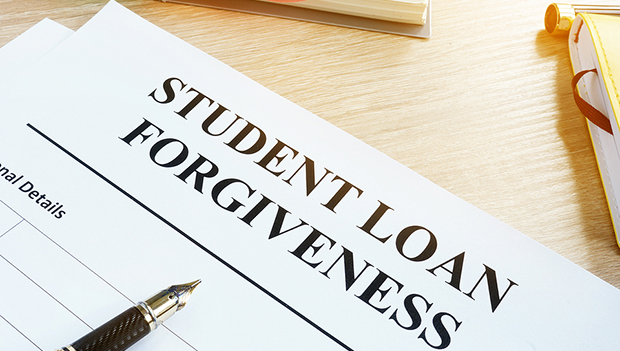Student Loan Debt Relief Update

The U.S. Supreme Court has determined that the federal student debt relief program, initiated last year, did not have proper authorization. Consequently, student loan interest accumulation will resume starting on September 1st, 2023, and payments on these loans will be due starting in October.
How to Reduce Monthly Student Loan Payments.
Borrowers who want to reduce their monthly payments may explore repayment plan options, offered on StudentAid.gov, including income-driven repayment plans. These plans adjust your monthly payment amount based on your income level. There are other programs to reduce monthly payments, as well. StudentAid.gov provides objective details on the pros and cons of each repayment plan available, to help you determine which plan best fits your situation. StudentAid.gov also provides a loan simulator, that helps you see in real dollars how much each plan effects your short term and long term payments.
Payment Based Loan Forgiveness.
A new federal program allows eligible individuals to have their student loans forgiven if they have made (or once they do make) 10 years of monthly payments toward the debt. “Ten years of payments” is defined as 120 monthly payments, which do not need to be consecutive. And if you have made more than 10 years of payments, you may be eligible for a refund in the amount you paid beyond 10 years.
To be eligible for this, one must be enrolled in one of the income driven repayment plans discussed earlier. If involved in one of these plans, the U.S. Department of Education will determine how many of your previous payments count toward the new 10 year maximum of payments required, and adjust the total number of future payments due, if any. This is called a “Payment Count Adjustment”, whereby the total number due of future monthly payments is lowered. Once all the payments have been made, the student loan is forgiven, regardless of how much money was borrowed. You can learn more about this program on the U.S. Department of Education website.
Note that with payment-based loan forgiveness, if you suspended your payments at any time, such as by using a deferment plan, those months do NOT count toward your 10 years of payments. One exception to this, however, is the pause of payments during the COVID pandemic– those months of nonpayment DO COUNT as if you maintained your monthly payment. Another exception is if loan has been in forbearance. Up to 12 months of consecutive, or 36 months of non consecutive loan forbearance WILL COUNT as if you maintained your monthly payment.
Also note that the program does not count months of payment or months of forbearance prior to July 1st, 1994, toward the 120 months of payment due.
Public Service Loan Forgiveness.
Those who work in public service are also eligible for payment-based loan forgiveness, if they have worked in public service for 10 years or more, even if not consecutively. This includes working for a federal, state, local, or tribal government agency, or a qualifying non-profit organization. There is a tool provided online to help you see if the agency you have worked for qualifies for this program.
Note that the Public Service Loan Forgiveness plan does not count months of payment or months of forbearance prior October 1st, 2007, toward the 120 months of payment due.
Loan Deferment.
Loan Deferment allows you to suspend your student loan payments for a temporary period of time. The interest on the loan still accrues during this time, meaning the total amount you will owe when the deferment ends will be higher than when the deferment started. Another drawback of deferment is that each month you defer payment is a month you can not apply toward payment-based loan forgiveness.
Eligibility for loan deferment depends on from whom you borrowed money. Federal student loan programs include deferment for cancer treatment, economic hardship, graduate fellowship, in-school deferment, military and post active duty student deferment, unemployment deferment, and several more. You can learn more about deferment programs and eligibility at StudentAid.org
For borrowers unable to make their payments, the U.S. Department of Education is creating a temporary “on-ramp” period, during which missed, partial, or late payments will not lead to negative credit reporting, default, or loans being sent to collection agencies. Borrowers who can make payments should do so, as payments will be due and interest will accrue during this on-ramp period. Missed payments will also not count toward loan forgiveness under any of the income-driven repayment plans or Public Service Loan Forgiveness plan.
You can find more resources related to financial assistance by selecting the “Financial Resources” category tab on our “Social Service Utilization Library” page.
-AMAZONPOLLY-ONLYAUDIO-START- You can find links to the resources mentioned in this episode with the written version of this story on our website at cincinnati, dot, united resource connection, dot, org. You’ve been listening to the Cincinnati Social Service News, now available as a podcast on Amazon Music, Audible, Apple & Google Podcasts, iTunes, and Spotify. If you have social service news to submit to this podcast, visit cincinnati dot united resource connection dot org. Once there you can also subscribe to get a free summary of the past week’s local social service news stories emailed to you every Saturday morning. So subscribe to our e-newsletter and podcast, and visit us online to discover more social service news and resources. -AMAZONPOLLY-ONLYAUDIO-END-
